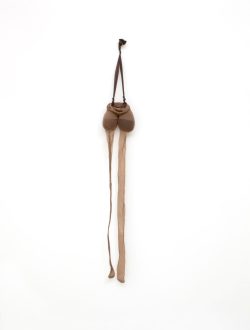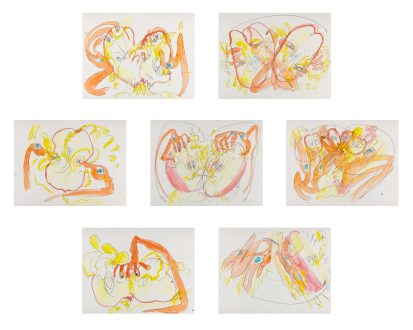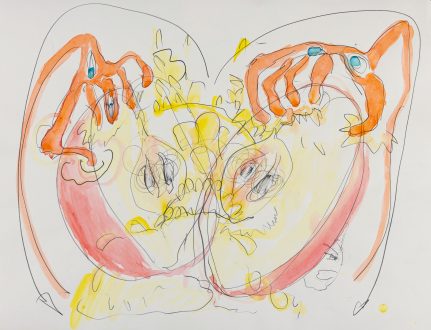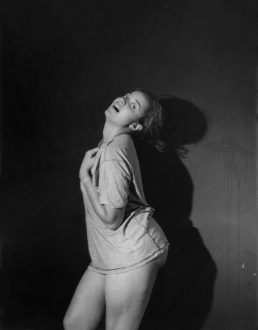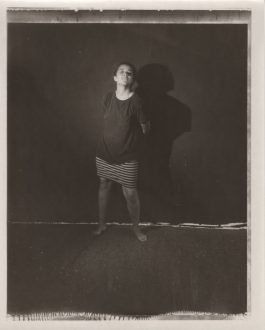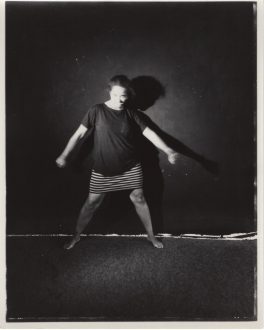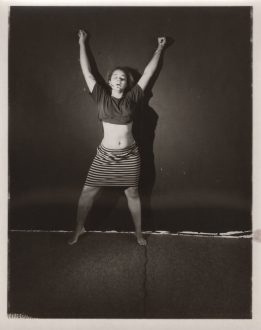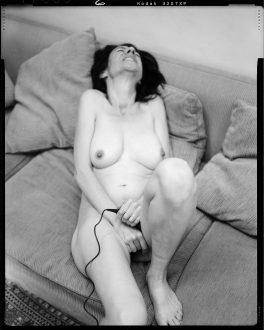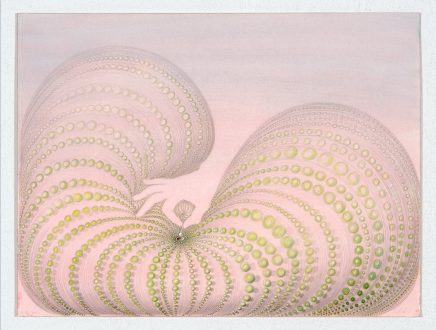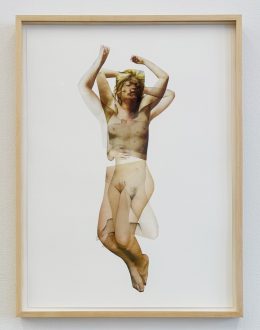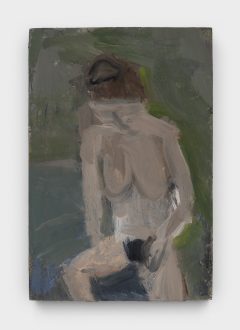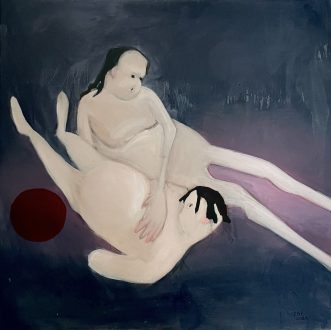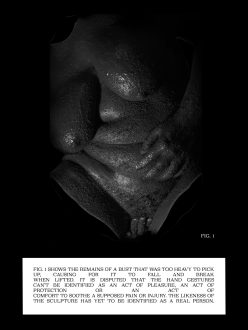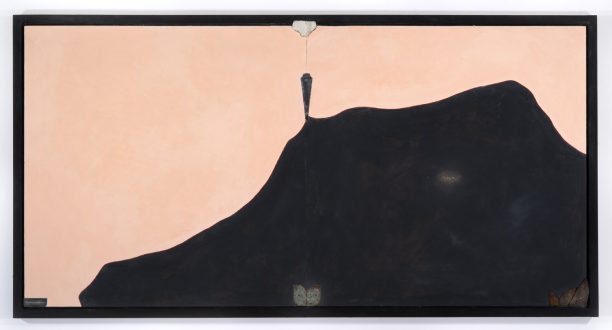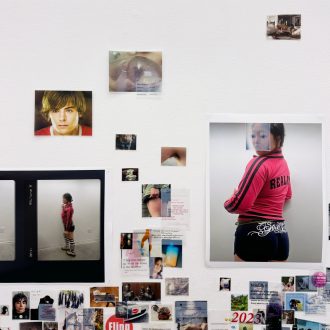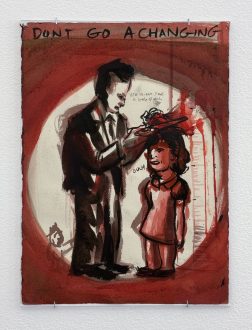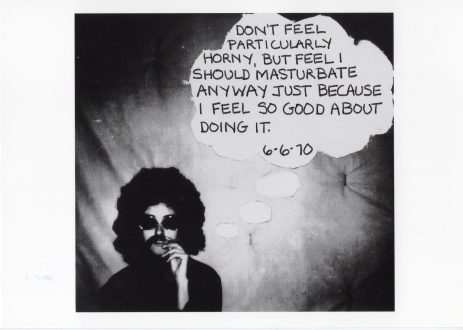Self-Pleasure (Works)
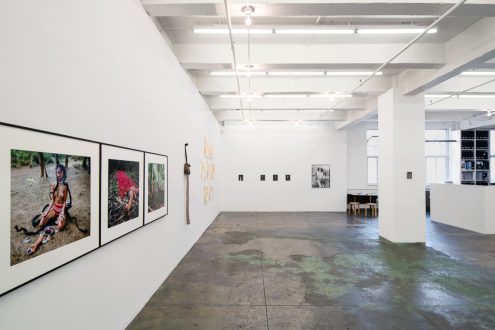
 Hidden (triptych), 2007. Digital C-print, 24 x 25 in. each. Edition of 5 (+ 1 AP)">
Hidden (triptych), 2007. Digital C-print, 24 x 25 in. each. Edition of 5 (+ 1 AP)">
 Hidden (triptych), 2007. Digital C-print, 24 x 25 in. each. Edition of 5 (+ 1 AP)">
Hidden (triptych), 2007. Digital C-print, 24 x 25 in. each. Edition of 5 (+ 1 AP)">
 Hidden (triptych), 2007. Digital C-print, 24 x 25 in. each. Edition of 5 (+ 1 AP)">
Hidden (triptych), 2007. Digital C-print, 24 x 25 in. each. Edition of 5 (+ 1 AP)">
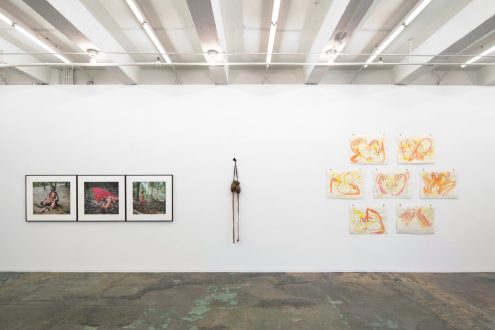
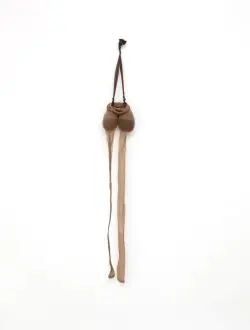 R.S.V.P., Reverie - Stale Mate, 2014. Nylon tights, sand.">
R.S.V.P., Reverie - Stale Mate, 2014. Nylon tights, sand.">
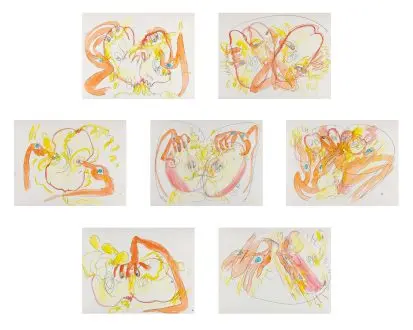 Traumatizing An Apple series, 2014. Ink on paper.">
Traumatizing An Apple series, 2014. Ink on paper.">
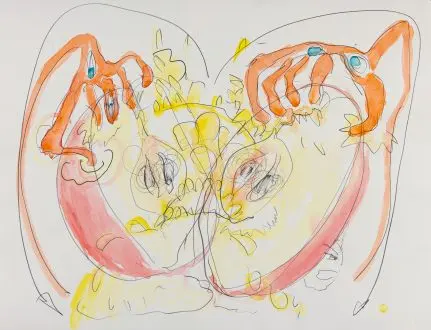 Traumatizing an Apple (1-7), 2019. Watercolor and pencil on paper, 54 x 70 cm. each">
Traumatizing an Apple (1-7), 2019. Watercolor and pencil on paper, 54 x 70 cm. each">
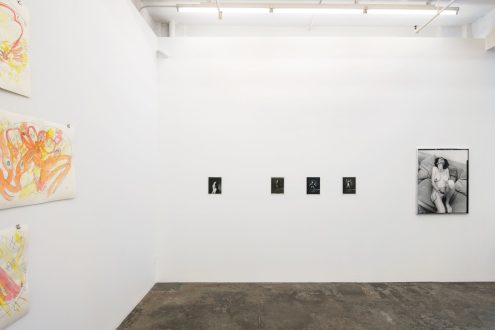
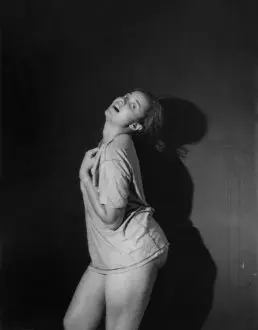 Untitled (black wall) #13, 1987-1988. Vintage gelatin silver prints, paper dimensions: 10 x 8 in.">
Untitled (black wall) #13, 1987-1988. Vintage gelatin silver prints, paper dimensions: 10 x 8 in.">
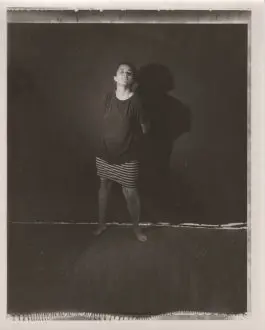 Untitled (black wall) #7, 1987-1988. Vintage gelatin silver prints, paper dimensions: 10 x 8 in.">
Untitled (black wall) #7, 1987-1988. Vintage gelatin silver prints, paper dimensions: 10 x 8 in.">
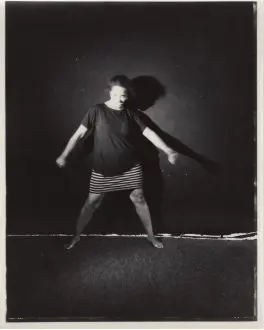 Untitled (black wall) #8, 1987-1988. Vintage gelatin silver prints, paper dimensions: 10 x 8 in.">
Untitled (black wall) #8, 1987-1988. Vintage gelatin silver prints, paper dimensions: 10 x 8 in.">
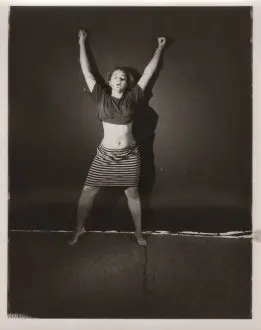 Untitled (black wall) #1, 1987-1988. Vintage gelatin silver prints, paper dimensions: 10 x 8 in.">
Untitled (black wall) #1, 1987-1988. Vintage gelatin silver prints, paper dimensions: 10 x 8 in.">
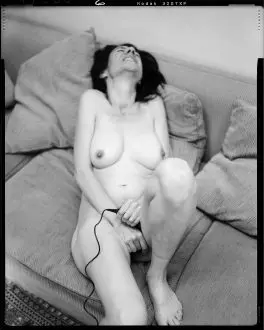 Masturbating on Marc's Couch 23 Days After Breaking Up, 2015. Gelatin silver print, 40 x 30 inches.">
Masturbating on Marc's Couch 23 Days After Breaking Up, 2015. Gelatin silver print, 40 x 30 inches.">
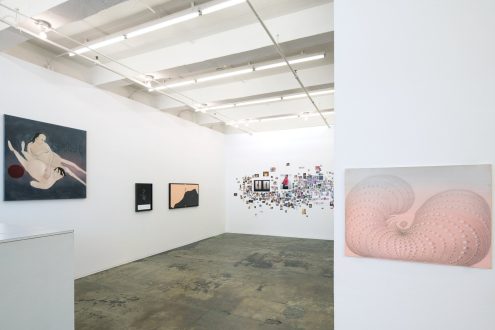
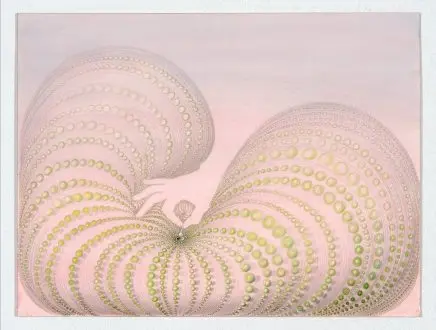 Be Precise, 2014. Acrylic paint, graphite, colored pencil, conté crayon on paper, 18 x 24 in.">
Be Precise, 2014. Acrylic paint, graphite, colored pencil, conté crayon on paper, 18 x 24 in.">
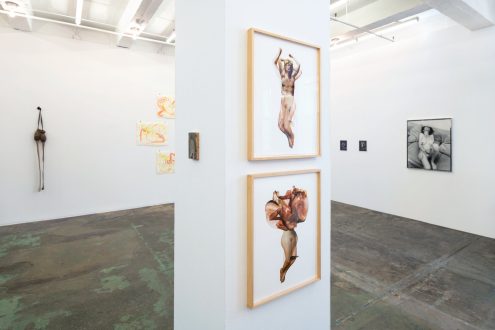
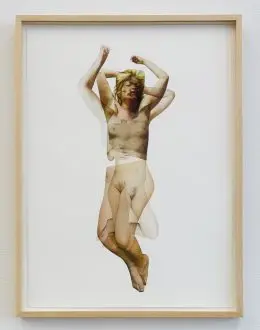 Mars I, 2022. Collage on paper, 24 x 18 in.">
Mars I, 2022. Collage on paper, 24 x 18 in.">
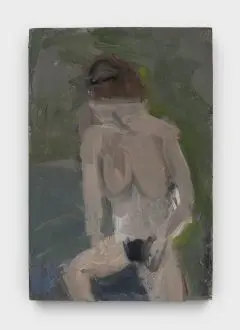 Bather, 2022. Oil on canvas, 6 x 4 in.">
Bather, 2022. Oil on canvas, 6 x 4 in.">
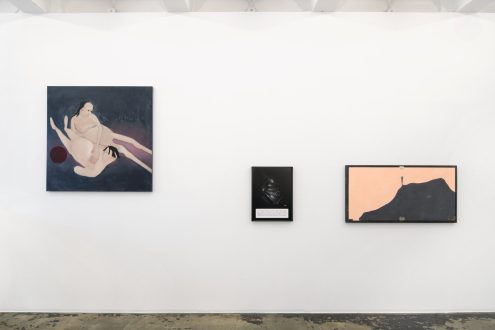
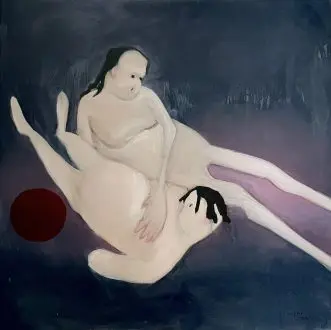 How to Hold an Omen, 2024. Oil on canvas, 48 x 48 in.">
How to Hold an Omen, 2024. Oil on canvas, 48 x 48 in.">
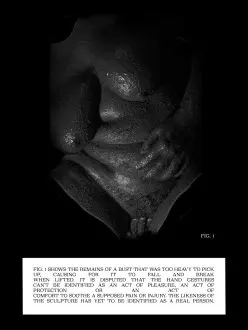 Likeness Unidentified, 2022. Archival pigment print, 22 x 18 in. Edition of 2 (+ 1AP)">
Likeness Unidentified, 2022. Archival pigment print, 22 x 18 in. Edition of 2 (+ 1AP)">
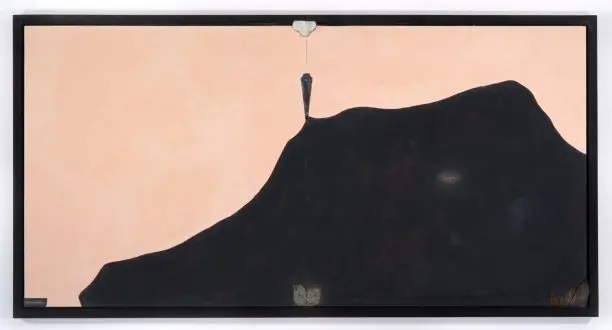 Span, 2021. Oil on wood, found objects, 50 x 28 in.">
Span, 2021. Oil on wood, found objects, 50 x 28 in.">
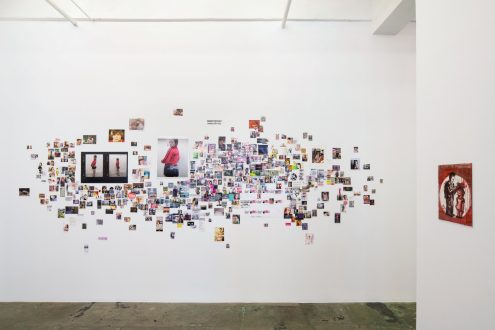
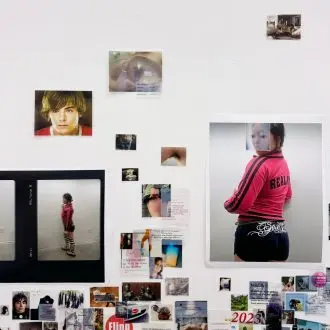 Let Me Show You How Terrible I Can Be, I Can Be Real Terrible (Detail), 2023-2024. Found and original imagery and text, printed on transparency film and archival inkjet paper.">
Let Me Show You How Terrible I Can Be, I Can Be Real Terrible (Detail), 2023-2024. Found and original imagery and text, printed on transparency film and archival inkjet paper.">
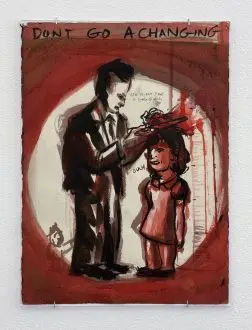 Don’t Go A Changin’, 1995. Ink on paper, 15 x 11 inches.">
Don’t Go A Changin’, 1995. Ink on paper, 15 x 11 inches.">
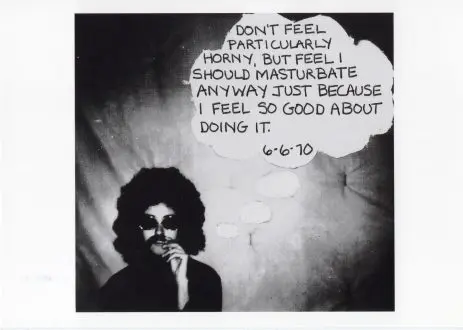 Mythic Being, 1974. Postcard.">
Mythic Being, 1974. Postcard.">
Selected Works
Tofo Bardi - Nicole Eisenman - Chitra Ganesh - Andrea Éva Győri - Justine Kurland - Kinke Kooi - Jacky Marshall - Shala Miller - Anne Minich - Senga Nengudi - Janice Nowinski - Adrian Piper - Carla Williams - Jin Young Lee with Colin Sakamoto and Thomas Raggio
Opening reception: June 27, 6:00 to 8:30pm
Self-Pleasure Press Release
Thomas Erben is thrilled to present Self-Pleasure, a thematic exploration that delves into the realm of female self-gratification, offering a multilayered journey through the complexities of pleasure, desire and autonomy.
The exhibition showcases work by fourteen female identifying as well as non-binary artists and is curated by Sabrina Slavin, the gallery’s archivist, who is herself an artist working in photographic self-portraiture. Across painting, sculpture, mixed media, lens-based art and performance, these works brim with female agency and self-determination, while discussing the self in its relation or reaction to a wider social context.
Slavin observes: “It is depleting to think about sex only as something to be consumed, rather than the beginning of us all. By making love, we create life. Through self-love, we create ourselves; like clay spinning on a wheel, being molded with soft force. As women, erotic imagery is not created with our psychic needs in mind, so we create our own imagery. There is joy and healing in singularity, in allowing yourself the space for self-discovery. This is the essence of self-pleasure.”
The artists exhibited use self-portraiture or the sharing of moments of intimacy as sites of ambiguity and critical examination. Adrian Piper’s Mythic Being, for example, uses a diary entry about her masturbating in an unpublished 1974 Village Voice ad, publicizing an act, which – at the time – was more associated with male pleasure.
In a self-portrait from 2015, we see Justine Kurland, orgasming in a state between pleasure and pain, pointing simultaneously – as the title references a recent break up – to the potential for psychological release. Masturbation is used here as an act of healing as well as of rebellion. The same ability is the subject of the vitally expressive drawings by Andrea Éva Győri, who instrumentalizes this act of self-love to heal psychic wounds left in the wake of sexual trauma.
As a counterpoint, Jin Young Lee‘s sprawling installation of self-portraits, screenshots and texts – the result of an exquisite corpse-kind of conversation with her male collaborators – presents aspects of internet culture, where women and the concept of sex become so detached from reality that they occupy an entirely fictitious space. Further poking at misogynistic gender expectations, Nicole Eisenman’s watercolor adds a darkly-comical coming-of-age story.
“Male energies”, humorously referenced in Senga Nengudi’s nylon mesh sculpture, are present in her sand-filled bulbous forms, which simultaneously suggest pendulous breasts and testicles. And, gender fluidity as well as entwinement are the subject of Jacky Marshall’s collages, in which her and her partner’s (in male drag) nude portraits are printed on transparent film, intermingling materially as well as visually. In Tofo Bardi’s paintings, by contrast, genderless beings float ethereally in a space defined solely by color.
Subtly, and emerging as a result of a painterly process starting from 19th century erotica, we see a female figure suggestively touching herself in Janice Nowinski’s intimate painting. The same gesture is pointed to in Kinke Kooi’s pastel Precise, and becomes an unidentifiable “act of pleasure, an act of protection or an act of comfort to soothe a supposed pain or injury” in Shala Miller’s work.
Grotesquely guised, Chitra Ganesh plays the crone in both the tradition of the sadhu and the witch, performing a mysterious ritual in one part of her triptych, and an act of defying self-pleasure in another.
Ruminating over the effect being female has had on her life, Anne Minich’s Span mimicks the span of Duchamp’s mannequin in his peep-hole-only accessible installation of Étant donnés: 1° la chute d’eau in Philadelphia, Minich’s place of work and life.
The show invites viewers to embrace their own erotic power, free from shame and judgment.
In her photographic series, Carla Williams captures these ideas. We see her dancing with herself coyly posing in the first frame, with her motion blurred in the second, and finally, her belly exposed, with an expression of triumph, eyes closed and mouth agape in the third.
Williams created a canon for Black female self-representation because she could find none. It is this act of creating something in a space of one’s own which Slavin propels us to join as we celebrate the power of self-discovery and self-love in an unapologetic ode to empowerment and liberation.



